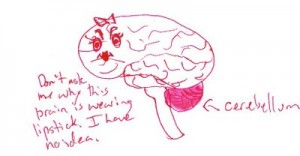After his first upper cervical adjustment, his Dad said that he didn’t have to hold onto the walls when walking down the hallway anymore.
Predictability of a result for people is never dead certain. Causation is complex. A student asked me the other day what happens when people don’t get better. I said, well, if I’ve done my best and the patient has done their best, i.e. stuck to the plan, given it the appropriate time frame, rested well, done their prescribed homework, sorted out any lifestyle and stress issues along the way, then it’s okay to part ways.
For me, I think the biggest aspect of lack of success is “the appropriate time frame” and the element of faith in the healing process. As a society, I think we’re generally more steeped in fear than faith. Also, it’s probably just the way I was raised, but I’m of the nature where success comes from hard work over extended periods of time. Sometimes that doesn’t sit well with people. Predictability also comes from practice based evidence: We’ve seen this before, this is what happened over this period of time, so it’s likely we can expect this kind of result.
 I’m re-posting our story of cerebellar ataxia after looking after Rohaan for a couple years now at Spinewave since listening to this audio of a woman whose ataxia was so bad she couldn’t even pick items up.
I’m re-posting our story of cerebellar ataxia after looking after Rohaan for a couple years now at Spinewave since listening to this audio of a woman whose ataxia was so bad she couldn’t even pick items up.
Ataxia is a neurological problem which means poor muscle coordination, imbalance, instability, staggered gait or walking and unsteady movements.
We’re not quite sure what the problem is even after extensive testing, nerve conduction studies and MRIs. It may be genetic, it may be acquired, but we know that there is a neurological problem between brain and legs. It’s a neuropathy that begins in the trunk and ends in the feet, impairing coordination and balance, creates pins and needles, and is hopefully not progressive. We also know that chiropractic care helps. Adjusting the atlas brings function back online and all these things improve. The condition isn’t reversed, but their quality of life is raised and that’s the point.
For the student: I also do full spine adjusting with Rohaan (left) and adjust his feet, ankles, knees and femeroacetabular joints on a weekly basis finding that really helps proprioceptive input. This was their video from early 2009
